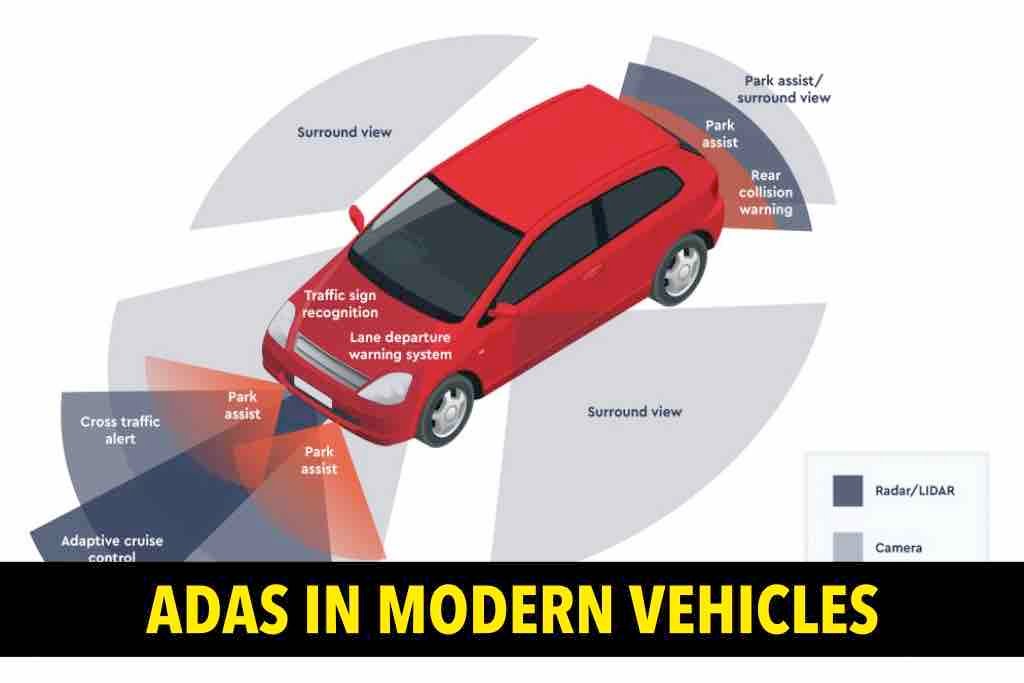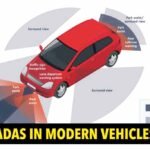Advanced driver assistance systems (ADAS) are features in modern vehicles that help drivers avoid accidents and make driving more direct. Some of the top ADAS features available today incorporate way-keeping help, flexible journey control, and mechanized emergency slowing down.
These systems use sensors and cameras to screen the road, issue alerts, or make helpful moves when vital. For instance, way-keeping helps use sensors to detect when a vehicle is wandering from its way and, a while later, makes a transition to keep the car in the way. Flexible journey control uses sensors to avoid the vehicle ahead, and computerized emergency slowing can distinguish an obstacle in the road and brake the car normally.
ADAS features are on a mission to be progressively typical in new vehicles, and they can give an essential well-being advantage to drivers. Nonetheless, it’s necessary to appreciate how these systems work and what they should or shouldn’t do before depending on them.
An advanced driver assistance framework (ADAS) is intended to mechanize or work on vehicle security.
ADAS systems are on a mission to be progressively ordinary in modern vehicles as producers look for ways to increase security and diminish the number of disasters making the rounds. These systems use different sensors and cameras to screen the environment around the vehicle and give cautions or make a remedial move if it is fundamental.
One of the most generally perceived Ada features is way-keeping help, which uses cameras to distinguish when the vehicle drifts.
The Advantages of Rearview Cameras in Modern Vehicles
ADAS systems can be found in both new and old vehicles
While searching for another vehicle, numerous customers are excited about the advanced driver assistance systems (ADAS) it offers. ADAS systems can be found in new and old cars, yet they are most common in more up-to-date models. Here are some of the top advanced driver assistance systems available in modern vehicles:
Flexible journey control (ACC) is a framework that changes the vehicle’s speed to avoid the car before it. It is especially significant in stop-and-go traffic.
Way-keeping assistance (LKA) is a framework that uses sensors to recognize when the vehicle is wandering out of its way. It can give the driver a visual or detectable warning, and it could attempt to provide sensitive remedial control to keep the vehicle in its path.
Weak side disclosure (BSD) is a framework that uses sensors to perceive vehicles on the driver’s soft side. It can give the driver a visual or detectable warning, and it could attempt to hold the driver back from switching to one more path in case a vehicle is on the weak side.
Leaving assistance systems use sensors to help the driver exit the vehicle. They could give visual or noticeable warnings or attempt to steer the car into a parking spot.
These are a couple of the advanced driver assistance systems that are available in modern vehicles. Many of these systems are intended to make driving more secure and helpful, so they are worth considering while looking for another car.
The most notable ADAS features are way-flight admonitions, weak side revelations, and programmed slowing down.
Modern vehicles are loaded with a steadily developing display of electronic well-being features, and many are intended to thwart setbacks before they happen. These systems, generally known as advanced driver assistance systems, or ADAS, can give essential warnings to drivers and even assume command over the vehicle to avoid or direct an impact.
Way takeoff cautions are the most unlimited kind of ADAS, utilizing cameras or sensors to distinguish when a vehicle is going out of its way. Yet again, if the framework indicates that the driver isn’t guiding in the right direction, it will give the driver a noticeable or visual warning. Once in a while, the framework could make a fragile supportive directing commitment to help keep the vehicle in its way.
The weak side area is one more average kind of ADAS, utilizing sensors to evaluate the district around the vehicle for different vehicles, hindrances, or anticipated risks. If the framework perceives something on the weak side, it will warn the driver so they can make a transition to avoid an accident.
Programmed slowing down is another significant well-being feature on a mission to be progressively ordinary in new vehicles. This framework uses sensors to recognize an obstacle in the way of the car and will generally apply the brakes if the driver doesn’t answer in time. It can be significant in keeping away from low-speed impacts, and a couple of systems could carry the vehicle to a stop if essential.
These are a couple of the most notable ADAS features found in modern vehicles, and many more are opening up constantly. These systems can give a gigantic lift to somewhere with no problem in the city and will likely be considerably broader in the years to come.
Further created features incorporate flexible journey control, night vision, and 360-degree cameras.
As car innovation advances, so do the features available in modern vehicles. Flexible journey control, night vision, and 360-degree cameras are a few of the further evolved characteristics that are on a mission to become more typical in current vehicles, trucks, and SUVs.
Flexible journey control is an element that consequently changes the speed of a vehicle to avoid the car before it. It can be a significant gadget while driving on the roadway, helping to prevent setbacks by staying away from the car in front.
Night vision is another component of a mission to be more common in modern vehicles. It uses infrared innovation to allow drivers to find objects in low-light or evening conditions. Night vision can help drivers avoid hindrances and make better decisions while driving in the evening.
360-degree cameras are a, by and large, innovation that is on a mission to become more common in vehicles. These cameras give drivers an all-out viewpoint on their environmental elements, making stopping and avoiding obstacles less complicated. 360-degree cameras can similarly provide a superior view while sponsorship is up.
These are just a few of the further evolved features in the current vehicles. As car innovation continues to develop, we can expect to see many additional features from this point forward.
Some ADAS features are legally essential in certain areas, while others are open as optional add-ons.
Advanced driver assistance systems, or ADAS, are features in modern vehicles that help drivers differently. Some of these features are lawfully vital in unambiguous wards, while others are optional.
Way-keeping help is one ADAS feature that is legitimately fundamental in certain wards. This element uses sensors to distinguish path markings and then helps the driver keep the vehicle inside the way. It might be advantageous on extensive outings or in terrible weather when it is more troublesome to remain inside the path.
Flexible journey control is another ADAS feature available as an optional extra in numerous vehicles. This element uses sensors to recognize the speed and distance of the car before the driver, and a short time later, it changes the vehicle’s speed in the same way. It can help the driver avoid the car in front and stay away from backside impacts.
Weak side acknowledgment is another optional ADAS feature available in numerous modern vehicles. This element uses sensors to recognize cars on the soft side of the driver and, a while later, make the driver mindful of their presence. It can help the driver avoid setbacks while moving on another path.
Leaving help is another optional ADAS feature available in numerous modern vehicles. This component uses sensors to distinguish impediments and helps the driver exit the vehicle. It can be advantageous in jam-stuffed parking spaces or limited spaces.
These are a couple of the numerous ADAS features available in modern vehicles. These features can help drivers remain protected all over town and avoid accidents.
ADAS systems continually improve and are on a mission to become more common in modern vehicles. Some current ADAS features include programmed emergency braking, way takeoff cautions, and flexible journey control. These systems help make driving more secure for everybody by decreasing setbacks and further developing the traffic stream. As ADAS innovation continues to evolve, we expect to see considerably more successful systems later.










